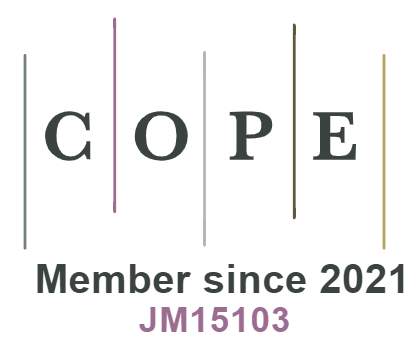Semantic and Lexical Changes in Neo-Latin Vocabulary in the Field of Medical Devices and Procedure
DOI:
https://doi.org/10.18778/1733-0319.26.21Słowa kluczowe:
łacina, greka, medycyna, terminologia, językoznawstwo, semantyka, słowotwórstwo, zapożyczeniaAbstrakt
The article concerns the possibility of using Latin as a means of communication by the medical community. It is an analysis leading to an answer to the question of the possibility of conveying in Latin the content, which determines the intellectual activity of a modern man. Meeting this challenge requires the introduction of new terms and phrases into Latin vocabulary. The currently used words in the field of medical devices and procedures will be discussed. Motivation of Neo-Latin terms, the reasons for the word transformation and the directions of these changes, as well as calques from modern languages and the issue of terms that can be called ‚loan words returning’ (i.e. words of Latin origin, which survived in modern languages and returned to the Neo-Latin vocabulary, following the path: Latin to modern languages to Latin) will be the subject of the analysis. Finally, it will be focused on the intelligibility and communicativeness of these terms. The purpose of the study was to draw attention to the enormous potential of Latin and to demonstrate that Latin (similarly to modern languages) has the opportunity to meet the challenges posed by significant technological progress and related to its requirement of creating new specialized terms.
Bibliografia
Albert, S. (1998). Imaginum vocabularium Latinum. Saarbrucken: Publisher Societas Latina.
Google Scholar
Buttlerowa, D. (1978). Rozwój semantyczny wyrazów polskich. Warszawa: Wydawnictwo Uniwersytetu Warszawskiego.
Google Scholar
Chamizo-Domínguez, P.J. (2008). Semantics and Pragmatics of False Friends. New York: Rout-ledge Taylor & Francis Group.
Google Scholar
Col, J.J. del (2007). Diccionario auxiliar español-latino para el uso moderno del latín. Bahía Blanca: Instituto Superior Juan XXIII. http://www.juan23.edu.ar/latin/ [27.05.2022].
Google Scholar
Harper, D. R. Online Etymology Dictionary. https://www.etymonline.com/ [10.11.2022].
Google Scholar
Janson, T. (2006). Latein – Die Erfolgsgeschichte einer Sprache. Germ. Ed. Hamburg, Germany: Publisher Helmut Buske Gmbh. 160–161.
Google Scholar
Janson, T. (2012). The History of Languages: An Introduction. Oxford: Oxford University Press.
Google Scholar
Jurewicz, O. (2000). Słownik grecko-polski. Warszawa: PWN.
Google Scholar
Krukowska, S. (2015). „Internacjonalny charakter Łacińskiej terminologii elektronicznej”. Collectanea Philologica 18. 123–130. https://doi.org/10.18778/1733-0319.18.11.
Google Scholar
Krukowska, S. (2017). Łacina jako środek komunikowania treści związanych z osiągnięciami współczesnej myśli technicznej. Łacińskojęzyczne słownictwo z zakresu elektroniki, informatyki i Internetu. Warszawa: Kuba.
Google Scholar
Lichtenberger, P. (2022). Lexicon Latinum Hodiernum vel Vocabularium Latinitatis huius aetatis. http://www.lateinlexikon.com/ [27.05.2023].
Google Scholar
Lucendo, J. (2020). Centuries of Inventions: Encyclopedia and History of Inventions. Kindle Edition.
Google Scholar
Lumley, J., D’Cruz, A., Hoballah, J., Scott-Connor, C. (2016). Hamilton Bailey’s Physical Signs. Demonstrations of Physical Signs in Clinical Surgery. 19th Edition. New York: CRC Press Taylor & Francis Group.
Google Scholar
Machnicka, V. (2007). „Złudzenia semantyczne, czyli kilka podstawowych typów aproksymatów leksykalnych (na materiale języka angielskiego zestawionym z odpowiednikami polskimi, wybranym ze ‘Słownika angielsko-polskiego, polsko-angielskiego wyrazów zdradliwych’ K.F. Rudolfa)”. Acta Universitatis Lodziensis. Folia Linguistica Rossica 3. Semantyka i pragmatyka tekstu. Łódź: Wydawnictwo Uniwersytetu Łódzkiego. 77–93.
Google Scholar
Maćkiewicz, J. (1984). „Co to są tzw. internacjonalizmy?”. Język polski 3. 176–184.
Google Scholar
Morgan, D. (2000). Lexicon Latinum. http://www.culturaclasica.com/lingualatina/lexicon_latinum_morgan.pdf [27.09.2022].
Google Scholar
Neues Latein-Lexikon: Lexicon recentis latinitatis. Vatican: Libraria Editoria Vaticana. 1998.
Google Scholar
Nybakken, O.E. (2012). Greek and Latin in Scientific Terminology. Whitefish: Literary Licensing, LLC.
Google Scholar
Porter, S.E. (2000). Diglossia and Other Topics in New Testament Linguistics. Sheffield: Sheffield Academic Press.
Google Scholar
Soanes, C. (2006). Oxford English Dictionary. Oxford: Oxford University Press.
Google Scholar
Stroh, W. (2007). Latein ist tot. Es lebe Latein! (Kleine Geschichte einer grossen Sprache). Berlin: Ullstein.
Google Scholar
Tuwim, J. „Łacina”. Oprac. L. Winniczuk. (1975). Lingua Latina – Łacina bez pomocy Orbiliusza. Warszawa. 12.
Google Scholar
Ulmer, A. (2017). „Elektryczność w cywilizacjach starożytnych?”. Maszyny Elektryczne: zeszyty problemowe. Nr 4(116). 39–46.
Google Scholar
Pobrania
Opublikowane
Wersje
- 2023-12-08 - (2)
- 2023-10-05 - (1)
Jak cytować
Numer
Dział
Licencja

Utwór dostępny jest na licencji Creative Commons Uznanie autorstwa – Użycie niekomercyjne – Bez utworów zależnych 4.0 Międzynarodowe.












